In this blog, we have discussed how real-time data is revolutionizing credit risk management for banks and other financial institutions with some real-world examples and insights from the latest trends.
Whether it’s credit cards, mortgages, or financing automobiles and consumer electronics, consumers want instant credit decisions. However, with household debt reaching a record $17.94 trillion in Q4 2024 and delinquency rates continuously rising across multiple loan categories, managing credit risk effectively is more crucial than ever – according to the Federal Reserve Bank of New York’s latest quarterly report on household debt and credit.
As credit card delinquencies have surged to 7.1% , household debt increased by $147 billion, and auto loan delinquencies have climbed to 2,9%, banks and financial institutions must rethink risk assessment strategies to ensure accurate lending decisions and avoid the risk of lending to people or entities that may have a higher propensity to default.
As we enter 2025, integrating emerging technologies including real-time data for predictive analytics into credit risk management strategies has become a game-changer for banks looking to minimize non-performing loans (NPLs), default risk, enhance customer service, and improve overall decision-making processes.
How Real-Time Data Helps Minimize Loan Defaults
The traditional approach of relying solely on historical credit scores is no longer sufficient.
Historically, banks have relied on traditional approaches and models to asses creditworthiness using static data, such as credit scores, income statements, and past repayment histories. This is more of a reactive approach which often fails to detect early warning signs of financial distress.
By integrating real-time data and predictive analytics in credit risk models, banks can efficiently and accurately assess borrowers’ financial health more dynamically. It enables banks to continuously monitor borrower’s financial activity, spending patterns, and economic behavior based on which, they can adjust the risk profiles, detect potential defaulters, and intervene before loan becomes non-performing.
Further, banks can,
- Utilize AI driven models to analyze real-time data for detecting anomalies in borrower’s financial behavior.
- Machine-learning models to analyze vast amounts of real-time data to predict creditworthiness and potential lending risks associated with the borrower.
- Create dynamic credit scores based on both structured and non-structured real-time data.
- Customize loan terms based on real-time risk assessments and implement individualized risk-based pricing.
With rising delinquency rates and fluctuating interest rates creating new financial risks, the combination of real-time data and strategic credit portfolio management is essential for banks looking to minimize non-performing loans (NPLs) and enhance risk resilience.
According to S&P Global, the U.S. market expects a rise in defaults, particularly among speculative-grade debts in 2025, with rates projected at 3.5%. Real-time data can significantly mitigate these risks.
For a deeper dive into advanced risk management techniques, read our latest white paper: “Credit Portfolio Management In an Era of Fluctuating Interest Rates — Techniques, Technology, and Strategy.”
Real-World Examples of Banks Leveraging Real-Time Data to Manage Loan Defaults
Here are some real-world examples of how banks are leveraging real-time data to prevent loan defaults and enhance credit risk management.
1. AI/ML-Based Data Analytics Solution for Predicting Delinquent Customers
A U.S.-based commercial lender faced challenges in accurately predicting which customers were likely to become delinquent or have their loans written off, leading to increased non-performing loans (NPLs).
Anaptyss implemented an AI/ML-based data analytics solution that processed real-time data to predict customer delinquency with 93% accuracy. The system analyzed various data points, including transaction histories, payment behaviors, and other relevant financial indicators, to assess credit risk dynamically.
The lender achieved a significant reduction in loan defaults by proactively identifying high-risk customers and implementing targeted intervention strategies. This approach enhanced the overall health of the loan portfolio and improved financial stability.
Read the full case study
2. 40% Faster Validation of Third-Party Credit Risk Models Using Machine Learning
Another major U.S.-based commercial lender needed a faster and more reliable solution to validate third-party credit risk scorecards while ensuring regulatory compliance.
Anaptyss developed a machine learning-driven risk model validation framework, automating the review and approval process for vendor-provided credit risk models. The new system streamlined operations and reduced manual intervention.
By implementing this AI-powered solution, the lender improved operational efficiency by 40%, accelerated credit decision-making, and maintained compliance with industry regulations.
Read the complete success story
3. Amplifi Capital – Real-Time Machine Learning for Loan Offer Optimization
Amplifi Capital, a leading UK fintech lender in the credit union sector, needed a real-time decisioning model to optimize loan offers and increase customer acceptance rates. The key challenge was processing hundreds of client data points from credit bureaus and underwriting models in milliseconds while competing with other lenders on comparison platforms like Experian. They partnered with managed services provider
Amplifi Capital implemented a machine learning-driven behavioral model to predict loan acceptance probability for each customer in real-time.
By dynamically adjusting loan terms and pricing based on real-time insights, Amplifi Capital saw a 30% increase in loan offer acceptance rates. This AI-powered model significantly improved risk assessment while maintaining compliance and reducing non-performing loans (NPLs).
How Banks Can Implement Real-Time Data with Existing Risk Frameworks
Integrating real-time data analytics into existing credit risk management frameworks requires a strategic approach. Many banks operate with legacy risk models based on historical credit scores, static underwriting models, and batch-processing risk assessments. Here’s how banks can leverage real-time data within their existing frameworks.
1. Transform Traditional Credit Scoring with Real-Time Data
Traditional models use FICO-based lending models for assessing creditworthiness based on static, past financial behavior, which can be enhanced with Real-time data integration. For this, banks can incorporate ongoing financial transactions, employment shifts, and spending behaviors.
For example, instead of relying solely on a borrower’s credit score from six months ago, a bank can monitor real-time income deposits, cash flow stability, and discretionary spending habits to detect potential financial distress earlier.
2. Digital Twin Technology for Continuous Model Risk Validation
Many banks struggle with validating risk models, particularly as market conditions shift. Digital Twins provide a virtual simulation of financial models. This enables banks and other financial institutions to have real-time risk monitoring, stress testing, and predictive modeling.
For instance, a bank can use Digital Twin simulations to analyze how rising interest rates affect borrowers with variable-rate loans, allowing preemptive restructuring of high-risk accounts.
To explore how Digital Twins can revolutionize model risk management, read our white paper Leveraging Digital Twin Technology for Simulating and Managing Model Risks in Banking and Financial Services.
3. AI-Driven Dynamic Credit Scoring and Loan Adjustments
Machine learning models can process vast amounts of structured and unstructured real-time data to refine credit risk assessments dynamically. Banks can continuously monitor borrower behavior by analyzing millions of data points to detect early warning signs of default risk and adjust risk scores as financial conditions evolve.
One example could be a bank can leverage AI-powered dynamic credit scoring to detect a borrower’s financial distress early (e.g., missed utility payments, increased payday loan reliance) and proactively intervene and adjust credit limits or offer restructuring options.
Conclusion
With rising delinquencies and credit risks, banks must move beyond traditional credit scoring to real-time data analytics, AI-driven risk modeling, and Digital Twin simulations. These innovations enable proactive risk management, dynamic loan adjustments, and improved compliance in an evolving financial landscape.
At Anaptyss, we bring 8+ decades of combined expertise in managed services for financial institutions, helping banks optimize credit risk, compliance, and operational resilience. With deep domain expertise, combined with advanced capabilities in AI, machine learning, and real-time analytics, we deliver scalable, end-to-end solutions that drive smarter decision-making and sustainable growth.
Want to future-proof your credit risk strategy? Let’s talk. Reach us at info@anaptyss.com



